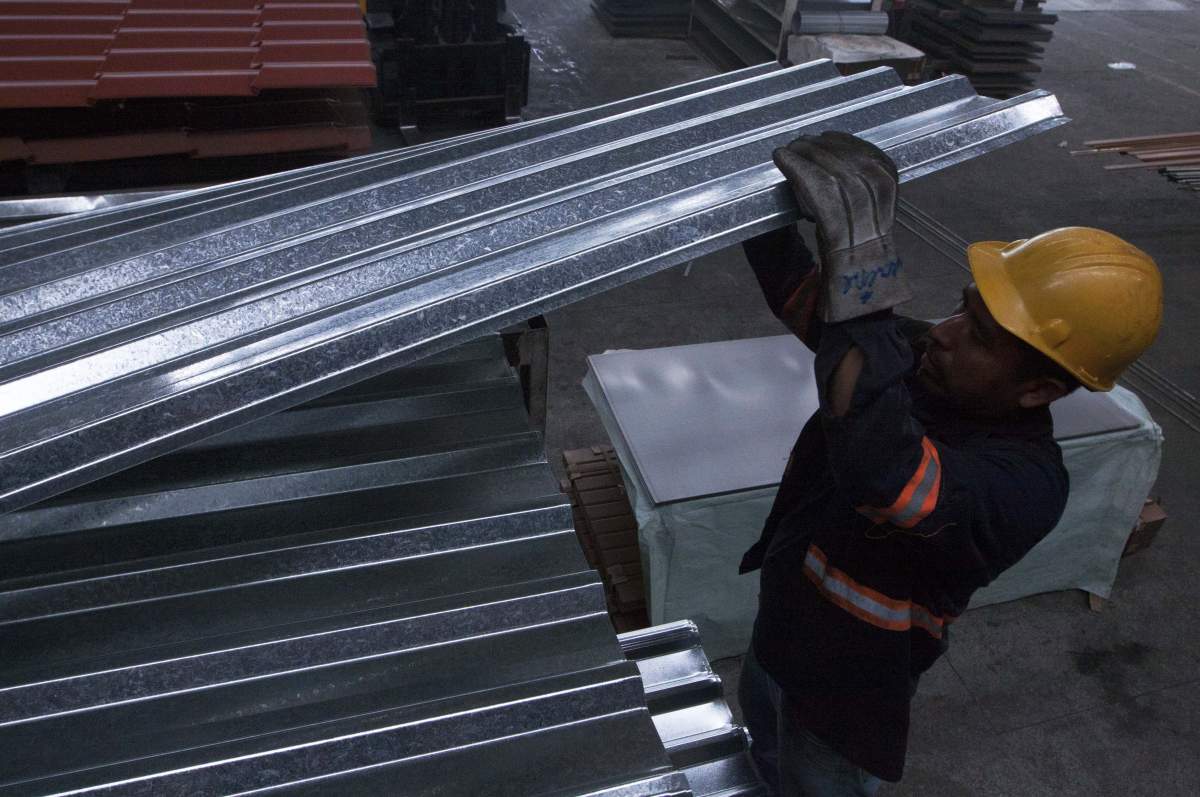The unthinkable happened on Thursday, when U.S. President Donald Trump slapped tariffs on some $20 billion worth of Canadian steel and aluminum. But what this could mean for the Canadian economy has more to do with “unthinkable” than “billions.”

READ MORE: U.S. announces steel and aluminum tariffs, Canada hits back
The impact of the tariffs themselves is likely to be limited, with the steel and aluminum industry accounting for just 0.5 per cent of Canada’s GDP and jobs, RBC senior economist Nathan Janzen wrote in a research note after the U.S. announcement.
What could send bigger shock waves throughout the economy is just how unhinged White House trade policies seem to have become.
“If they can pick on steel, then they can pick on any industry,” Janzen told Global News. That kind of thinking, he added, could lead Canadians businesses to press the pause button on business investment, especially for companies that are highly reliant on cross-border trade.
And that could throw a wrench into the one economic engine that’s been propelling Canada’s growth right now. GDP data released on Wednesday by Statistics Canada showed the economy slowing during the first three months of 2018, as higher interest rates and stricter mortgage rules cooled off the housing market and consumer spending. The bright note, though, was business investment, which truly seemed to pick up speed in the last few months.
“Policymakers have been hoping for years that exports and business investment would grab the baton from consumer spending and housing,” said Douglas Porter, chief economist at BMO Financial Group. And things were just starting to look that way, he added.
READ MORE: From pork to jeans — countries threaten tariff retaliation for U.S. steel, aluminum duties
Strength in business investment would allow the Canadian economy to keep humming along, even as overstretched households trim their spending and pay off debt.
But switching gears that way is getting “more challenging” now with the trade uncertainty, Porter said.
WATCH: Chrystia Freeland calls new tariffs ‘absurd’

U.S. might be hitting itself more than Canada with steel and aluminum barriers

Get weekly money news
Both Janzen and Porter appear less concerned about the direct impact of the tariffs on Canada’s economy.
Around 90 per cent of Canada’s exports of both commodities go to the U.S., so it’s clear those industries will feel the impact of the measures, Janzen wrote in his report. But the effects should be contained, for two reasons.
It’s not just that the steel and aluminum exports affected by the new measures account for only 3 per cent of what Canada ships to the U.S., according to RBC’s count. U.S. importers may also have little choice but to keep buying from north of the border, even if the stuff now costs more due to the tariffs.
This is especially true for aluminum, Janzen said, where there is less capacity for U.S. producers to ramp up production.
READ MORE: What U.S. steel, aluminum tariffs mean for Canadians — and their wallets
But even in other sectors, the impact of trade barriers on prices for Canadian producers has been muted, he added. For example, analysts worried about lower prices for Canada’s softwood lumber after the White House imposed tariffs on that sector last year.
Instead, “prices have been increasing sharply, as U.S. buyers have been eating the cost of tariffs,” Janzen said.
That bodes well even for Canada’s steel producers, which are likely a bit more vulnerable to the new trade measures, he added.
At the provincial level, the tariffs will disproportionately hit Ontario and Quebec, which account for 80 per cent of Canada’s steel exports and 75 per cent of its aluminum exports, respectively. But those industries make up less than 1 per cent of the economy in both provinces, Janzen said.
WATCH: EU warns Trump tariffs could trigger ‘severe turbulence’ on global markets

But what if this was just the beginning of a much bigger trade war?
Even if the U.S. may end up paying the bigger price for Trump’s tariffs in the short-term, there’s something else that worries Canada’s economists.
“The bigger concern here is that this is the start of something uglier,” Porter said.
The White House is also reportedly considering tariffs of 25 per cent on the auto industry, as another way to put pressure on Canada and Mexico during the final stages of the NAFTA talks.
If that ever happens, it would be a “huge negative” for Canada, Porter said. “Even the thought of that could put a chill on capital spending in Canada.”
READ MORE: Donald Trump takes another swipe at Canada’s ‘trade barriers,’ treatment of U.S. farmers
And despite the fact that the Trump administration seems to view tariffs as a way to extract concessions on NAFTA, the impact on the negotiations could be exactly the opposite, Porter warned.
“No one likes to negotiate under the clout of a threat,” he said.
Canada and Mexico, in other words, may now become less keen on compromise to avoid giving the impression that they are caving into Trump’s bully tactics.
WATCH: NDP question timeline of new Canada tariffs on U.S., Liberals want to consult first

Will the Bank of Canada still raise interest rates in July, as expected?
Economists have been expecting the central bank to raise rates again at its next meeting on July 11. On Wednesday, the bank kept rates steady but struck an upbeat tone that had many analysts proclaim a rate increase was likely in the cards a month-and-a-half from now.
But will the tariffs force the Bank of Canada to hold off?
According to Porter, the move “slightly reduces” the chance of a rate move in July. However, much will depend on what economic data actually shows between now and July 11.








Comments